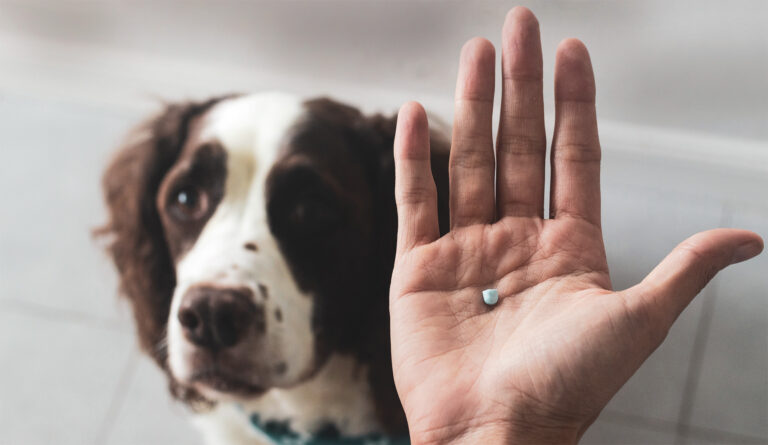A lot of the current communication with vets and animal industries around AMR focuses too much on blame and negativity, and does not help to make positive changes to culture and practice, according to a world-leading veterinary epidemiologist.
Dr Jane Heller, Director at Heller Consulting and Professor in Veterinary Epidemiology and Public Health at Charles Sturt University, co-founded the AMR Vet Collective to address the prevalence of these negative messages.
“The communication around changing antimicrobial use is often done with a really blunt instrument, in so far as saying, ‘You’re doing it wrong, you need to change’. That gets us absolutely nowhere,” she says.
Primary producers and vets have spent decades developing mechanisms to improve productivity and animal welfare, and with any complex system, change can be very difficult. It requires industry investment and considerable support, information and encouragement from peak bodies, Dr Heller says, particularly when those affected are unlikely to benefit from the changes in the short term.
“Now we’re at a point where we’re saying, ‘Well, actually, we need to reduce unnecessary antimicrobial use and we need to change the way that we use antibiotics’, which is absolutely fair and important. But many of the systems that have been developed to support increased production and increased animal health and welfare have relied, at least to some degree, on antimicrobials.”
One reason Dr Heller helped start the AMR Vet Collective in 2021 was to develop appropriate online learning material for vets. “We recognised that shame-based communication was not going to get us anywhere at all. It just drives people underground and they won’t engage,” she says. “So, what we’ve tried to do is set up an environment where it’s really positive.”
“
The communication around changing antimicrobial use is often done with a really blunt instrument, in so far as saying, ‘You’re doing it wrong, you need to change’. That gets us absolutely nowhere.
Celebrating success in animal industries
New communication strategies should focus on antimicrobial stewardship and share success stories so that the public knows that the efforts that are being made to address the threats. For example, Dr Heller says the poultry industry has made vast reductions in its use of antibiotics during the past two decades, but that message hasn’t been received by the community.
“The poultry industry is basically the pin-up child of antimicrobial stewardship,” she says. “The change that they’ve gone through over a number of years now has been incredible and their use of antimicrobials is just fabulous.”
Yet, because the rhetoric about the poultry industry is unbalanced and ill-informed (with incorrect suggestions that it is not doing anything and is driving the problem), it’s hard for industry bodies to be upfront about their statistics for fear they could be misconstrued.
“For example, often if there’s a need to use antibiotics in flock or herd-based production, it’s not in an individual animal, it’s in a group,” Dr Heller says. “So, in any antibiotic use in the livestock industry – and it might be entirely appropriate – the quantities are large. It’s not like you’re treating an individual human or an individual dog or cat. They might be appropriate for the issue at hand, but the communication won’t be like that. It’ll be X number of tonnes are used. So why would you publish your use statistics?”
Dr Heller says more proactive communication is needed to help policy makers and the general public understand the problem and the ongoing best-practice solutions. “People don’t understand that we live in a microbiological soup. Everyone is exposed to all manner of different bacteria and viruses. You can’t withhold antibiotic use and reduce use to zero,” she says. “So, instead, we need to know, what do we need to be checking for, what do we need to be making sure of?”

“
The poultry industry is basically the pin-up child of antimicrobial stewardship.
Tools that work
As well as better communications, veterinarians need other forms of support to make best-practice changes in antibiotic prescribing.
“Give them tools, give them examples, give them a verbal script that they can actually use to discuss treatment with clients and give them a handout to give out. They’re the types of things that help to make the change,” Dr Heller says.
“Make sure that there are resources and educational material out there for veterinarians to really understand how they can make changes and how they can engage industry and clients in conversations around those changes.”
Dr Heller described some veterinary practices that have successfully used social-engineering solutions to help change to more appropriate antibiotic use.
“They are changing their pharmacy shelves so that they’re putting any of the critically important antimicrobials out of reach,” she says.
“They might stop stocking some of them and they put what we call a ‘traffic light signal’ on them. So, the ones that should be reached for more commonly have green dots next to them. Those that should be less commonly used or used only with specific indications have the orange dots and then those that are really restricted should have the red dots. And often they’re just not stocking those red dot ones.”
Other social-engineering solutions include conducting quick cytology on urine, for example, to understand which type of pathogen is present. That could have a big impact on antimicrobial choice.
Dr Heller says that, generally, Australia is streets ahead of many other countries in terms of its antimicrobial stewardship in animals. “
We have a history of really good decision-making around the use of certain antimicrobials and voluntary restrictions for some critically important antimicrobials for use in animals, in particular livestock, and that’s been really beneficial. We also have relatively well-engaged industries and an interest in doing the best we can.”
Ken Eastwood is a highly experienced award-winning editor, journalist, author and communicator, with particular expertise in science, agriculture, sustainability and rural affairs.



